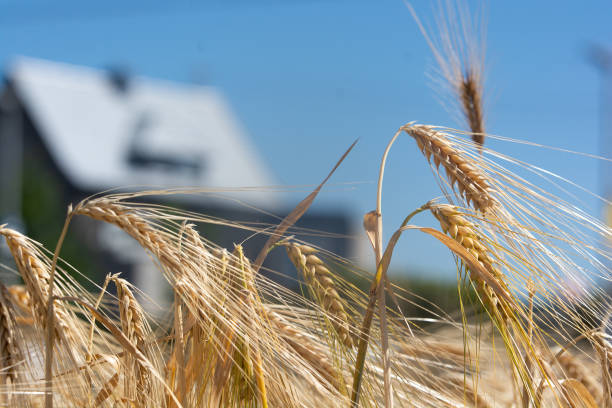The United Arab Emirates (UAE) has halted the export and re-export of Indian-origin wheat and wheat flour. This will prohibit the use of Indian wheat for any purpose other than home consumption in Gulf nations.
The four-month ban went into effect on May 13. The UAE’s Ministry of Economy has designated the limitation as a “moratorium,” citing “international events that have harmed commerce” as the reason for its implementation.

How is UAE still getting Indian wheat after the ban?
India restricted wheat exports on 14 May but exempted those backed by previously granted Letters of Credit (LIC) and food-insecure nations. The UAE belongs to the first group.
In light of worries that the intense heatwave had negatively impacted agricultural yields, the restriction was enacted in an effort to rein in soaring prices. India asserted that another reason for the limitations was to prevent Indian wheat from being stored and afterwards traded in a place where it was not intended to be.
Where is wheat re-exported by the UAE?
“India does not want its wheat exports to Dubai or Abu Dhabi to be re-exported as grain or flour to other nations.” It wants the wheat to be consumed locally, notably by Indian migrant workers in the UAE.
The UAE is a prominent re-exporting centre. Wheat is redistributed to Saudi Arabia, Bahrain, Jordan, Ethiopia, Taiwan, and the Philippines. Approximately one hundred thousand tonnes are exported annually, according to reports.
What statements have the UAE made?
According to a report by Reuters, the UAE has mandated that enterprises intending to export or re-export Indian wheat bought into the UAE prior to 13 May must first submit an application to the economics ministry.
How dependent is the UAE on India for wheat?
Since the wheat prohibition, the UAE has received 469,202 tonnes of wheat. India supplied 4.71 million tonnes of wheat to a country that relies solely on imports for consumption in 2021-2022. According to the United States Department of Agriculture, the UAE consumes 15 lakh tonnes of wheat annually.
Where does it obtain the remaining supplies?
Over 50% of imports originate in Russia, Canada, Ukraine, and Australia. Due to the current Russia-Ukraine conflict, global supply has been impacted.
Can India capitalise on this?
According to Reuters, the UAE and India struck a wide trade and investment agreement in February that intends to eliminate all tariffs on each other’s goods and grow their annual commerce to $100 billion within five years. The Comprehensive Economic Partnership Trade Agreement (CEPA) entered into force on May 1.
Despite this, India’s agriculture sector faces a few local obstacles. As we have observed this year, agricultural productivity is negatively impacted by unseasonable weather conditions, resulting in a shortage. This has the effect of increasing domestic prices. Second, governments choose long-term connections with vital food suppliers. To take advantage of the opportunity, India will need to assure sufficient domestic supply. Frequent export restrictions discourage other nations from relying on another nation for key goods such as food. From 2020 to 2021, however, India became an important provider, shipping 1.88 million tonnes of wheat to the Gulf federation.













